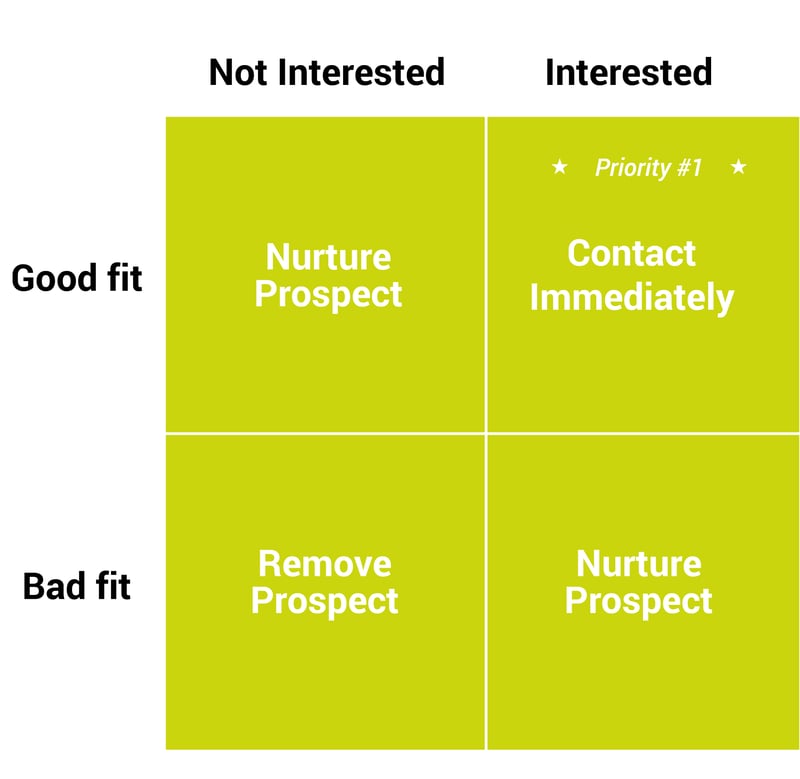Sales prospecting is a tough business. The conversion ratios are usually low and handling rejection is challenging, but a part of the job.
So, when a prospect indicates that they are interested to ‘chat further’ or say ‘send me a proposal’, it’s understandable that at times, process can take a back seat to emotional decision making. Following the money leads to abandonment of process and it can cost businesses dearly.
Unfortunately, not every prospective business is a good fit for your business. So how do you attract the best fit customers?
In our experience, most businesses have either too broad of a market definition. They’re afraid of missing out on sales opportunities, so they attempt to appeal to everyone. Or they have tightly defined their ideal customers, but don’t have relevant enough content to attract these types of prospects.
The first step in resolving these situations is to go back to your marketing and sales strategy and review your buyer personas and journey to make sure you have captured all the insights and criteria necessary. Prospecting and finding the right type of people to talk to, who are both a good fit for their business and yours is challenging and this foundational strategic work is so important to growing your sales pipelines and your business as a whole.
7 useful starting points for prospect qualifying criteria:
- Do you understand the prospects pain points?
- Do you understand their ‘why now'?
- Do you understand their capacity to afford your product or service?
- Do you understand the decision-making process?
- Do you understand their experience with your product or service?
- Do you understand your competitive set? Are you just making up the numbers?
- Do you understand their definition of success?
A fundamental flaw with traditional prospecting.
Traditional prospecting generally provides you an answer to a one-dimensional question: Is this prospect a good fit for our business’s product or service?
However, before you attempt to answer the questions above, there is a problem you need to resolve. Perhaps… they’re just not that into you? Is your prospective customer currently interested in your business? And, if they are, is there hard evidence to support this?
Inbound prospecting enables salespeople to consider both fit and interest.
It's important to consider interest alongside fit when prospecting. Inbound prospecting utilises the easy-to-understand Inbound Prospecting Matrix to determine if a prospect is (1) a good fit and (2) interested in your company.
However, unless you have access to inbound prospecting tools, it would be impossible to know whether or not someone is interested in your business before contacting them. Failing to understand the level of a prospect’s interest in your business, will result in wasted time and a high opportunity cost.
One of the key indicators of interest is to look at what companies have been visiting your website. Imagine a scenario like this - Someone views 20 pages on your site. Now, I would think that they would be more than open to hearing from you than someone who's never heard of your business. That's why it's crucial to consider interest alongside fit when prospecting so you can prioritise your efforts.
As for the other prospects, they should either be nurtured or removed from your pipeline, dependent on their position in the matrix.
Here's how to get started using HubSpot’s Inbound Prospecting Matrix in 3 steps.
Step 1: Identify businesses that have visited your website.
To find businesses that are interested in your company, you’ll need to navigate your way to Reports/Analytics tools and the click on the button labelled Prospects. This will open a new webpage showing businesses that have recently visited your website.
Step 2: Filter companies that are a good fit.
You'll now have a list of companies that have visited your website. At this point, you can apply filters to identify companies that are a good fit, such as:
- Number of times they've visited your website
- Date they were last active on your website
- Company size
- Location
- Industry
The possibilities are endless and really depends on your buyer personas and geographic or industry specialisation.
These are your hottest prospects that are most likely to close in the short term. Therefore, you should contact them immediately.
Step 3: Setup notifications for when these prospects visit your website.
How about taking it a step further and set up notifications for when your hottest prospects visit your website. This way a notification will pop up on your screen, identifying what pages they're viewing. You’ll need to install HubSpot Sales Pro if you are on the Free CRM or Sales Starter, however if your prospect is visiting a page containing case studies or pricing, there’s a high chance they're interested in purchasing your products or services. And this knowledge could be the difference between growing your sales or remaining stagnant.
As the saying goes, ‘timing isn’t everything, it’s the only thing!’
Understanding when businesses are interested in you - not just when you're interested in them is a core tenet of the inbound framework. When a business is interested, it helps structure the conversation in a way that is most helpful to the buyer. Remember that Inbound Sales isn’t about making loads of cold calls, and then getting excited about tiny conversion rates. By politely saying ‘no thanks’ you can focus on delivering tailored, relevant messages to prospects who are already interested in your business. And grow your sales as a result!





